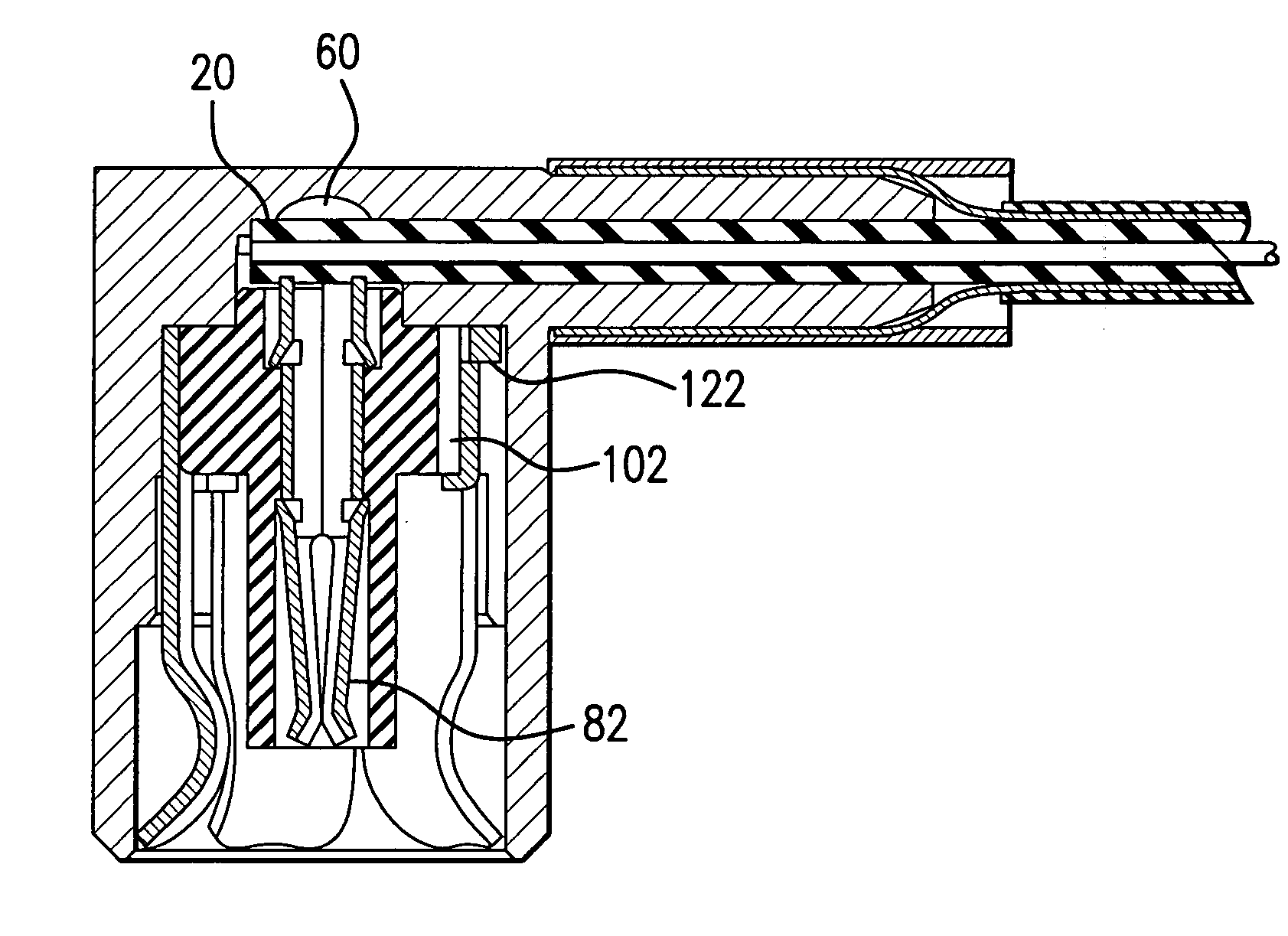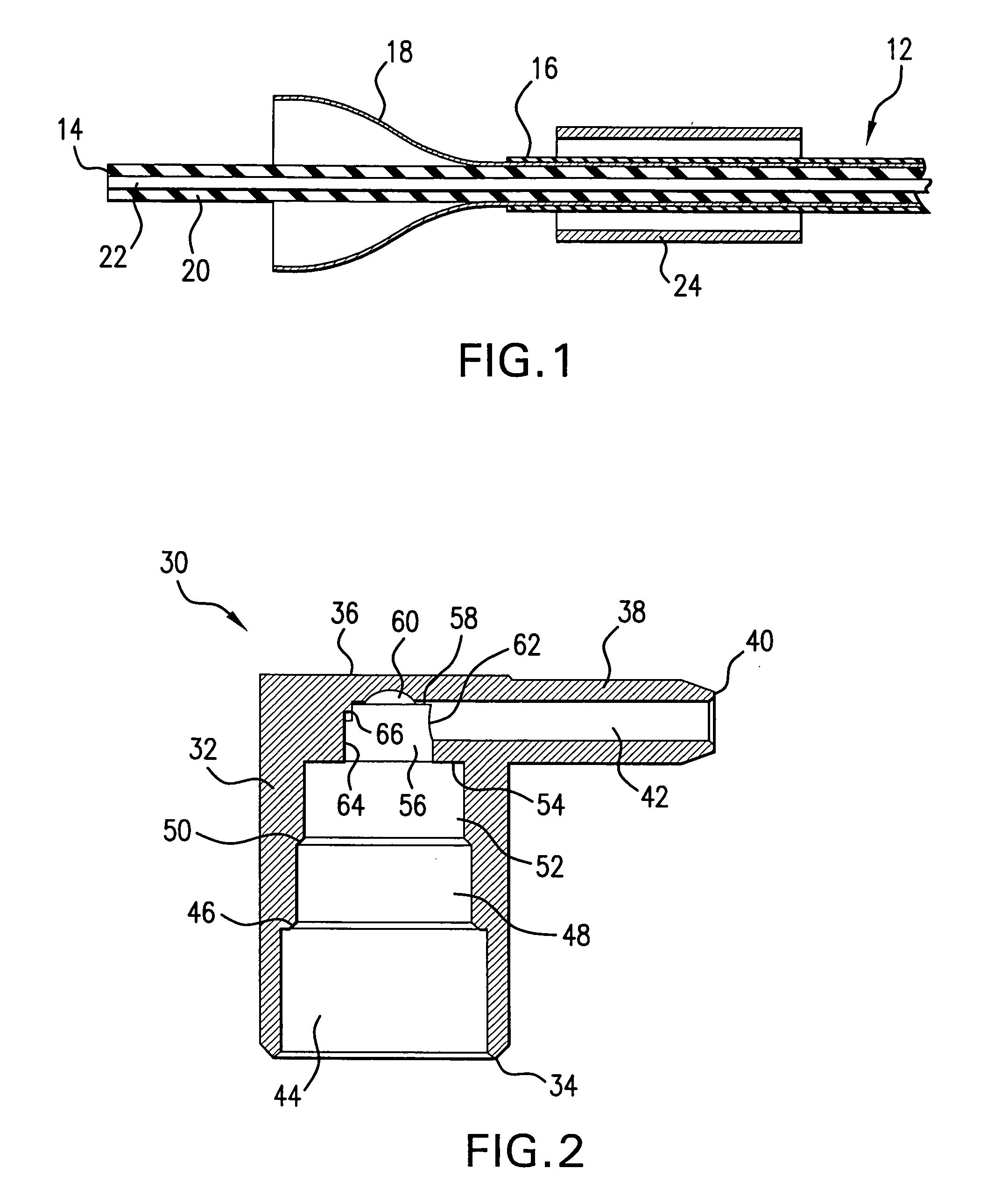Coaxial cable insulation displacement connector
a technology of displacement connector and coaxial cable, which is applied in the direction of two-pole connection, contact member penetrating/cutting insulation/cable strand, coupling device connection, etc., can solve the problems of increasing the number of components, time-consuming and often hazardous procedures, and damage the connection between the connector and the cable, so as to reduce the size of the connector and reduce the number of components , the effect of faster termination of coaxial cables
- Summary
- Abstract
- Description
- Claims
- Application Information
AI Technical Summary
Benefits of technology
Problems solved by technology
Method used
Image
Examples
Embodiment Construction
[0036]Referring now to FIG. 1, a coaxial cable 12 has an end 14 prepared for termination to a right angle coaxial cable connector according to the current invention. An outer insulative jacket 16 of the cable is stripped back a predetermined distance and then an outer conductive sheath or braid 18 is exposed and cut back a second, specific distance from the end 14. An inner insulation layer 20 and center conductive core 22 are left undisturbed. A ferrule 24, fashioned from a ductile, electrically conductive material such as brass, is slid over the cable end to surround the outer jacket 16 adjacent the cable end. Then the braid 18 is flared outward.
[0037]A connector body or housing 30 according to the present invention is shown in FIG. 2. The housing may be die-cast from an electrically conductive metal or material such as zinc or a zinc-aluminum alloy. The connector housing 30 has a generally hollow, cylindrical, first main section 32 with a first, open, terminal mating end 34 and a...
PUM
 Login to View More
Login to View More Abstract
Description
Claims
Application Information
 Login to View More
Login to View More - R&D
- Intellectual Property
- Life Sciences
- Materials
- Tech Scout
- Unparalleled Data Quality
- Higher Quality Content
- 60% Fewer Hallucinations
Browse by: Latest US Patents, China's latest patents, Technical Efficacy Thesaurus, Application Domain, Technology Topic, Popular Technical Reports.
© 2025 PatSnap. All rights reserved.Legal|Privacy policy|Modern Slavery Act Transparency Statement|Sitemap|About US| Contact US: help@patsnap.com



